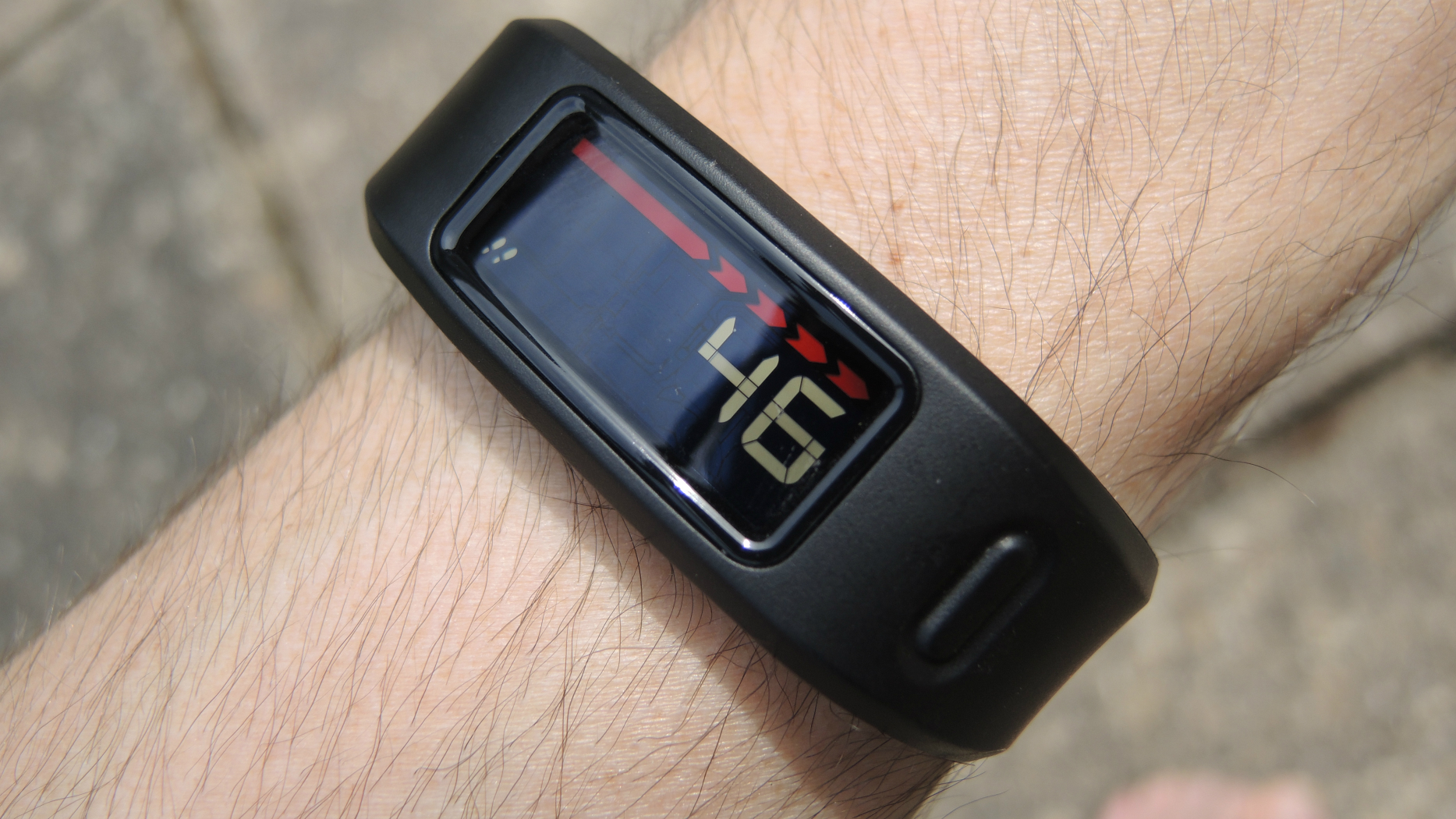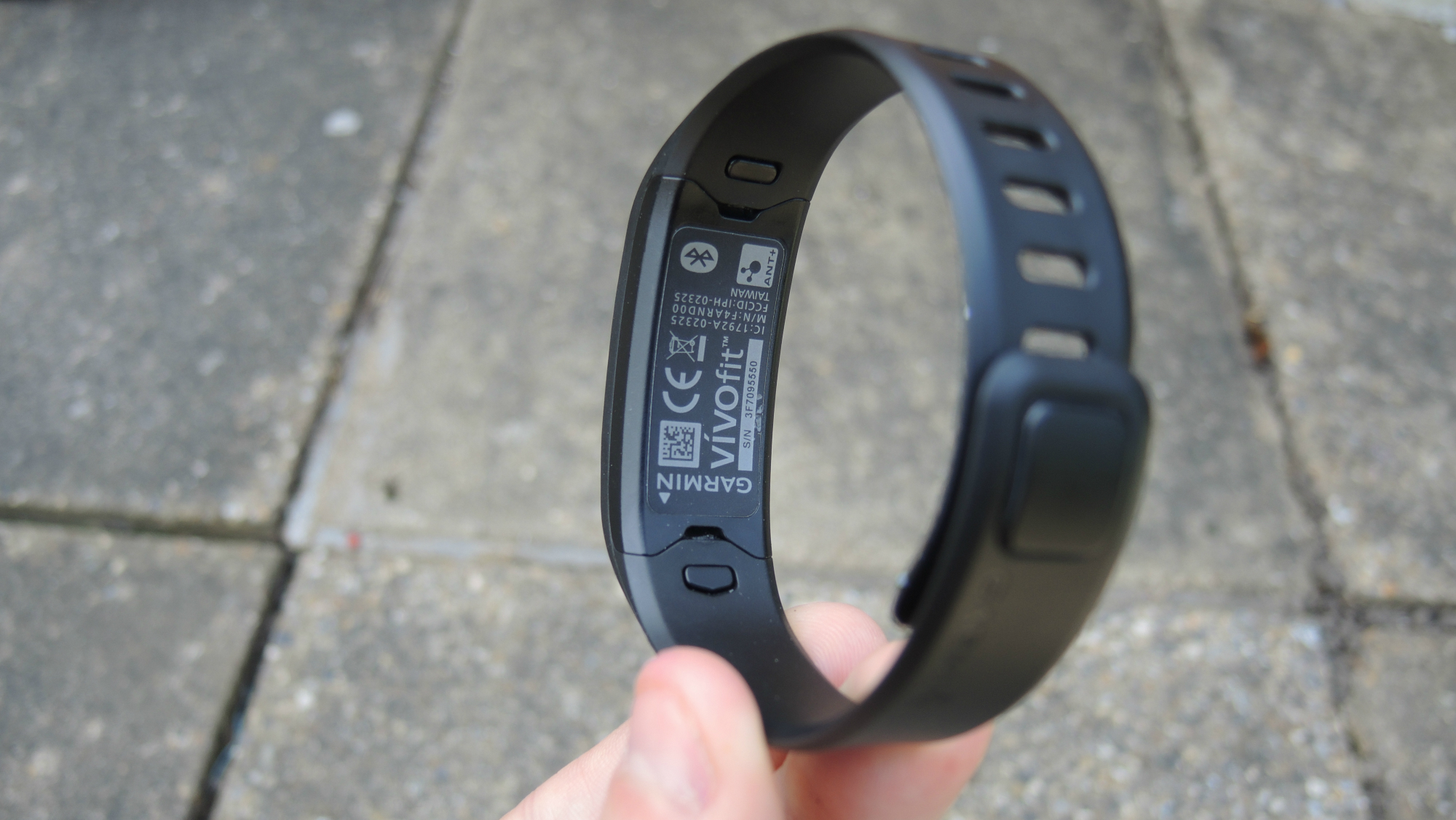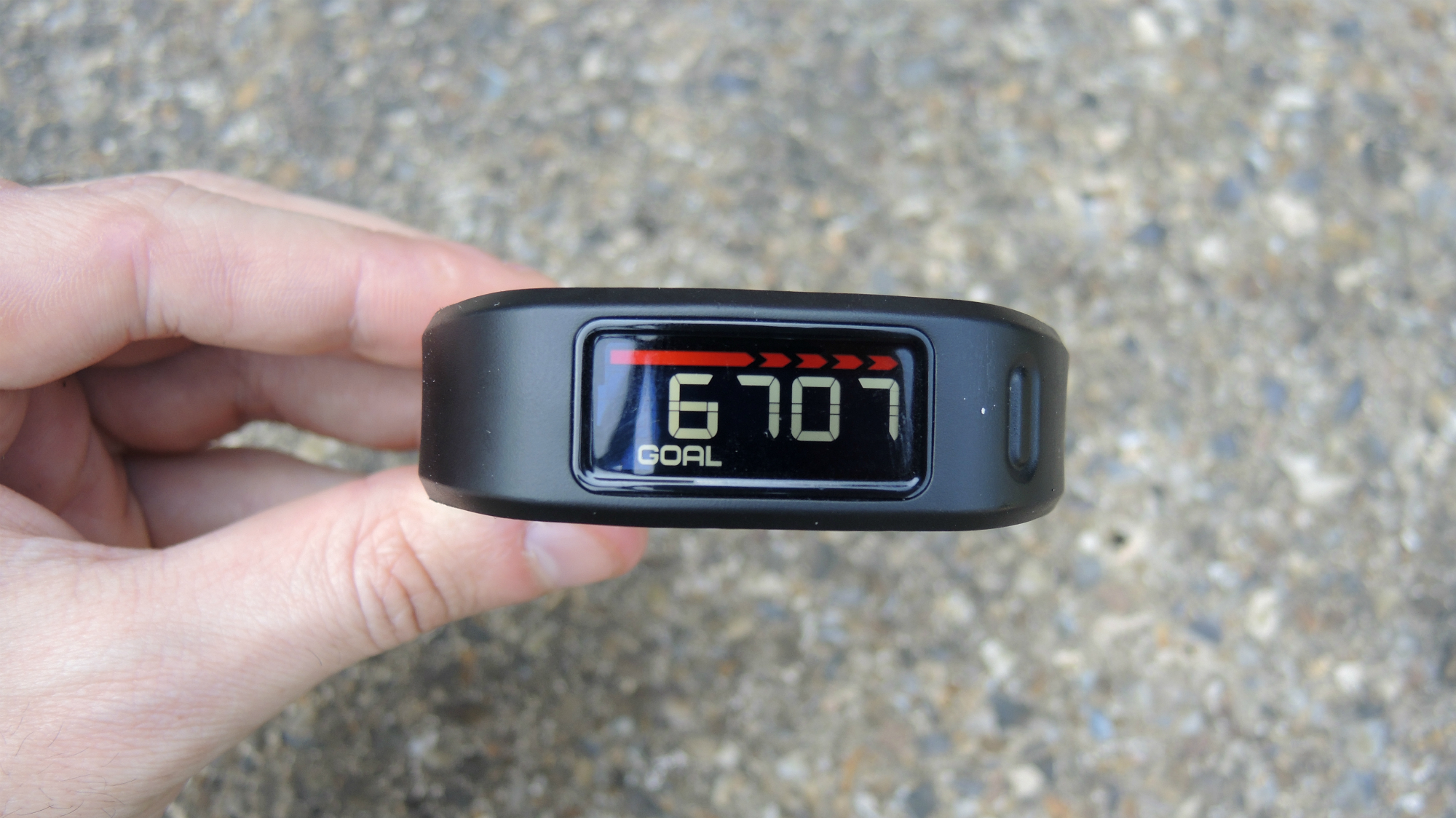Why you can trust TechRadar
Press the Vivofit's single button and you'll scroll through six core metrics: Time, date, steps taken, steps remaining to goal, calories burned, and total distance. You can eliminate some of these in the device settings in the companion app or website (which requires you to plug the included ANT stick into the computer) if you want to make scrolling faster.
You've also got the option of pairing the Garmin Vivofit with an ANT+ heart rate monitor, which adds another possible display. You can even buy the Vivofit with a monitor for £140/US$170/AU$199) but it's important to note that the band isn't compatible with Bluetooth Smart monitors.
We're starting to see more heart rate monitors built into wrist-based fitness tracker. Not doing so means the price can be kept down, but in general, getting an accurate heart rate reading on this part of the body is difficult anyway - the wrist is a busy place.

A red bar will occasionally appear along the top of the display, gradually growing from left to right. This is a measurement of your inactivity - when you get up and go for a walk, it'll start to shrink and eventually disappear. Owners of the Nike FuelBand SE and Jawbone Up24 will already be familiar with similar features.
But unlike the FuelBand, the Vivofit won't start singing or dancing to tell you to move about. Instead the red bar of guilt will linger, a measurement of how bad you should feel about yourself at that very moment. This is the wonderful era of fitness gamification, ladies and gentlemen, and it works.

General movement is tracked through the accelerometer, giving you a reading of the number of steps you've taken so far in your day, and how many are left to go. There's no GPS here but that's not a criticism. What is a shame is the lack of an altimeter, meaning that you won't be properly rewarded for those lengthy stair climbs.
What's perhaps best about the pedometer feature is how it's able to manage your personal goals. Turn on Auto Goals and the Vivofit kicks off with a 5,000 target. Smash that and the goal will slightly increase the next day; miss your target and tomorrow's will be lowered.
Sign up for breaking news, reviews, opinion, top tech deals, and more.
This dynamic goal system is a neat touch, but if you'd rather set your goals manually then the option to do so is there.
That's all well and good, but how's the accuracy? The fact the Vivofit relies solely on an accelerometer should be your first clue that it's not the most precise device on the market.
Walking around and comparing the steps taken on the Vivofit with my own mental calculations, the Vivofit tended to be out of sync by a step or two - but at least it was consistently so.
Perhaps the lesson here is that it makes more sense to compare the readings of a fitness tracker against itself for the sake of personal improvement. The lack of an altimeter does damage some of the Vivofit's accuracy, but the fact it can be worn in the shower and doesn't need to be charged means it'll be tracking some movement that other fitness bands miss out on.
Current page: Features and performance
Prev Page Introduction and design Next Page App, syncing and sleep tracking
Hugh Langley is the ex-News Editor of TechRadar. He had written for many magazines and websites including Business Insider, The Telegraph, IGN, Gizmodo, Entrepreneur Magazine, WIRED (UK), TrustedReviews, Business Insider Australia, Business Insider India, Business Insider Singapore, Wareable, The Ambient and more.
Hugh is now a correspondent at Business Insider covering Google and Alphabet, and has the unfortunate distinction of accidentally linking the TechRadar homepage to a rival publication.
